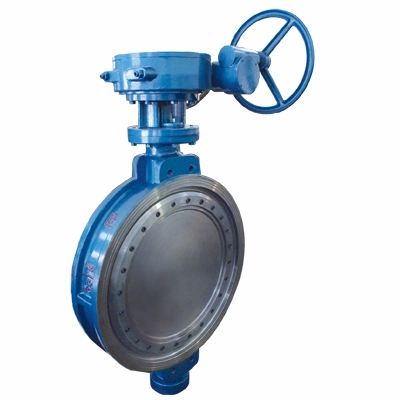Low temperature devices are constantly developed in China. The demands for low temperature valves are also gradually growing. To meet the demands of market economy developing, the structure of metal seal butterfly valve is improved.
A three eccentric pure metal seal butterfly valve having high performances is developed which cannot only be used for high temperature media, but also can be used for low temperature.
With industrial technologies highly developing, stricter requirements for valve industry are put forward, especially butterfly valves used for low temperature media. Besides having all of functions that common valves have, what is more important is that reliability of valve sealing under low temperature, flexibility of movement and other particular requirements for low temperature valves.
As is known to all, butterfly valve has the advantages of compact structure, low volume, light weight while having the same pressure (compared with gate valve having the same diameter, weight of butterfly valve is reduced by 40%~50%), low fluid resistance and quick on-off. However, more 80% of valves adopted by Chinese some low temperature devices such as gas liquefaction facilities, air separation plants and transformation absorption equipment are
globe valve or
gate valve. Only a few butterfly valves are adopted. Main reasons are that past
metal seal butterfly valve has poor sealing performance under low temperature and unreasonable structure causes inner leakage and outleakage, having great influence on the security and normal operation of low temperature devices, which cannot meet the requirements of low temperature devices.
There are two reasons causing leakage of butterfly valve under low temperature: inner leakage and outleakage.
Valve outleakage
One is that the connection between valve and pipelines is flanged connection, loosen caused by different shrinkage of packing, bolts and adapting piece under low temperature, results in leakage. So the connection between valve and pipeline is changed into welded structure in case of leakage under low temperature. The other one is the leakage between stem and packing. Packing on most of common valves is F4 for its good self-lubrication, low friction coefficient and unique chemical stability. So F4 is widely applied. While F4 also has disadvantages: large cold flow tendency and large coefficient of linear expansion. It causes leakage under low temperature, which results in freezing on stem so that valve cannot be opened. So the newly developed low temperature metal seal butterfly valve uses self-shrinking sealing structure-the large expansion factor of F4. Sealing under both normal temperature and low temperature can be realized through remained gap.
Valve inner leakage
Main reason of inner leakage is that deformation is caused by sealing pair under low temperature. When temperature of media falls to materials phase generate phrase transition, volume changes and sealing face which originally having high grinding accuracy warps and deforms, leading to poor sealing under low temperature.
The sealing face of newly developed butterfly valve has been changed from flat sealing to conical sealing. The valve seat is an oblique cone elliptic sealing face, forming sealing pair with circular elastic sealing ring mounted on disc. Sealing ring can float in radial direction inside groove of disc. When valve is closed, elastic sealing ring firstly contacts with minor axis of elliptic sealing surface. With stem rotating, sealing ring is gradually pushed inside, forcing elastic ring to contact with long axis of oblique circular cones. Finally, elastic sealing ring completely contacts with elliptic sealing face. The sealing is realized by deformation of elastic ring. So, when body or disc deforms under low temperature, the deformation is absorbed by elastic sealing ring for compensation, in case of leakage and being stuck. When valve opens, the elastic deformation disappears immediately. There is basically no relative friction during on-off. So the valve has long service life.

